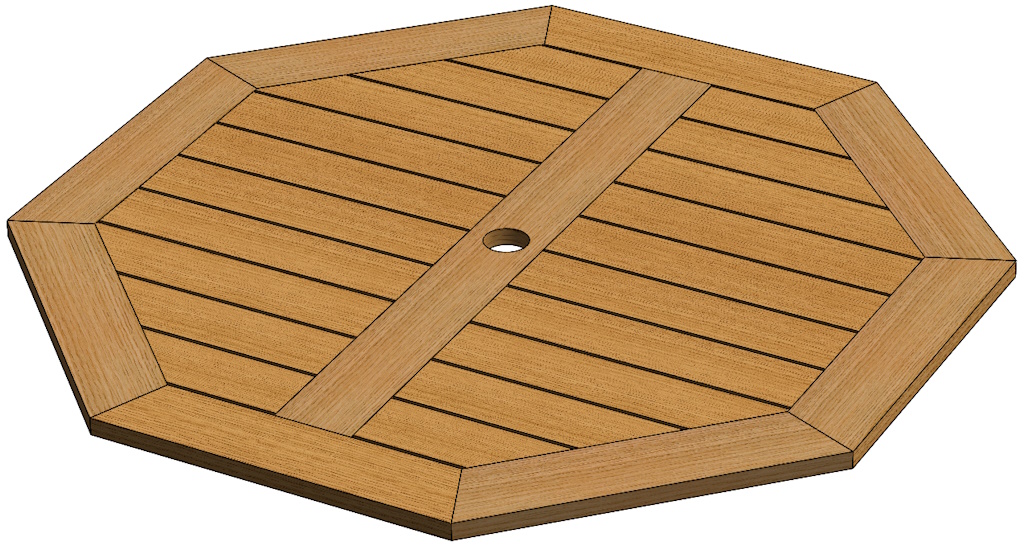Garden Table Build Process
Page 1 of 38
Posted 3rd May 2024
This is one of three projects I'm going to be writing up in parallel (the other two are described here and here). They'll each be running at very different paces, with two at the design stage while one is being made, but I thought I'd start posting updates on them all at the same time. I don't have space to work on multiple projects at the same time, but that doesn't stop me thinking and planning!
I'm starting this write-up while the project is in the design phase, although I've already bought the wood for it. I'll probably start cutting wood in a month or two at a guess.
The aim of this project is to make a new garden table. We currently have a cheap circular table made of painted steel with a glass top. The glass top used to be painted (and has been repainted a couple of times) but it's really starting to look shabby and it's time to replace it. I thought it would be an interesting and challenging project to try to make it (mostly using only hand tools) out of wood (sweet chestnut).
So far, I've decided (subject to change!) on the design of the table top:
For a sense of scale, it's 900 mm "across-flats". I'd toyed with the idea of a circular table, but I quite like the look of the octagonal shape and I think it'll be a lot easier to make without resorting to too many power tools.
I haven't decided on the structure beneath the top at the moment, but I expect it'll be very simple, consisting of four legs with some rails going between them (with mortice & tenon joints to join the rails to the legs). I have no desire to make this table collapsible for storage: the existing metal/glass one can be folded down and it has never been folded down in all the years we've had it. I've no idea where I would store it if I did fold it away!
For the top, I'm not sure what to do about the joinery and would welcome any advice. I'd guess that for joining the outer pieces to each other (end-grain to end-grain), dowels might be a plausible option. An obvious option for the end-grain to edge-grain joints is to put tenons on the ends of the slats and mortice them into the outer pieces and the central cross-piece. It would be easier to have tenons going into a groove in the outer pieces (rather than separate mortices), but that feels like it would introduce somewhere for water to sit, so I guess that's not ideal for an outdoor table. Alternative ideas for either joint (or for the design in general) would be gratefully received!
Page 1 of 38
This website is free and ad-free, but costs me money to run. If you'd like to support this site, please consider making a small donation or sending me a message to let me know what you liked or found useful.

 Return to main project page
Return to main project page